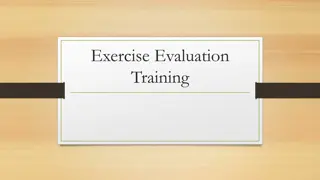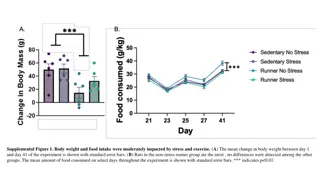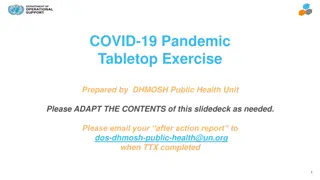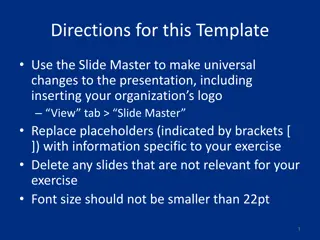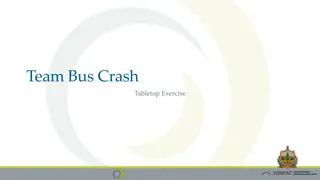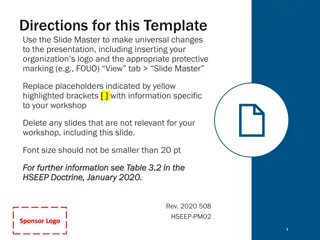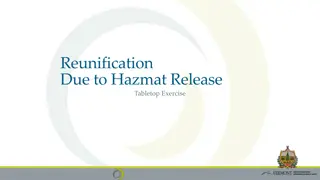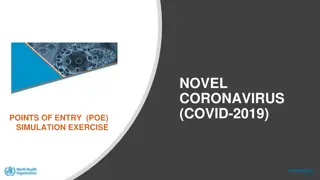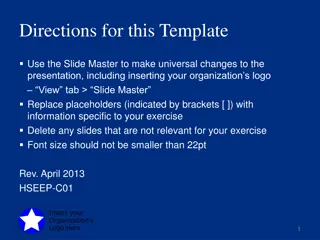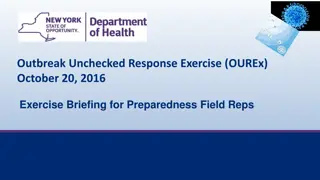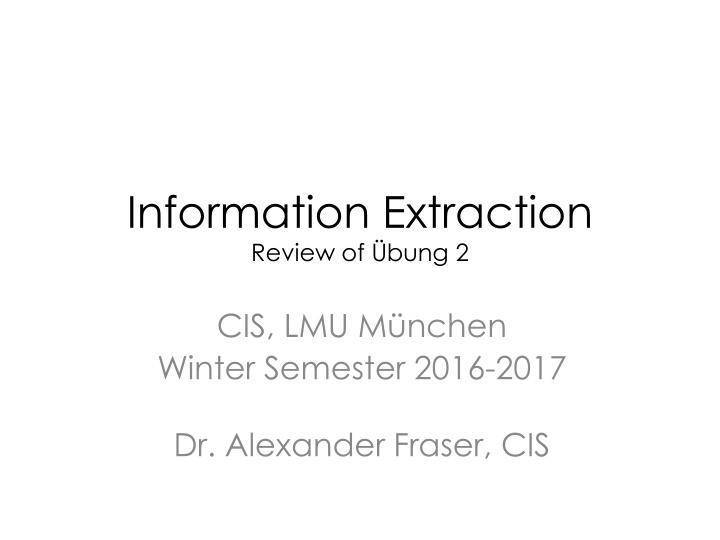
Information Extraction Review of Bung 2 in CIS at LMU Munich
Explore the review of bung 2 at CIS, LMU Munich for Winter Semester 2016-2017 by Dr. Alexander Fraser. Learn about basic setup, running experiments, and feature extraction using the open-source machine learning package Wapiti. Discover key concepts and tips for successful execution.
Download Presentation

Please find below an Image/Link to download the presentation.
The content on the website is provided AS IS for your information and personal use only. It may not be sold, licensed, or shared on other websites without obtaining consent from the author. If you encounter any issues during the download, it is possible that the publisher has removed the file from their server.
You are allowed to download the files provided on this website for personal or commercial use, subject to the condition that they are used lawfully. All files are the property of their respective owners.
The content on the website is provided AS IS for your information and personal use only. It may not be sold, licensed, or shared on other websites without obtaining consent from the author.
E N D
Presentation Transcript
Information Extraction Review of bung 2 CIS, LMU M nchen Winter Semester 2016-2017 Dr. Alexander Fraser, CIS
Administravia Seminar: Hausarbeit is due 3 weeks after your presentation However, Xmas break (24th to 6th) does not count towards your three weeks Add two more weeks if your working period touches these dates 2
I will present a quick review of the bung to make sure you have the key concepts If you are one of the few people who are not in the Seminar You will still be able to follow what I am discussing You can try doing the bung (Exercise2) by simply going to the Seminar web page and downloading the relevant materials 3
Review of bung In the bung last week, we used the open source machine learning package Wapiti We worked on a binary learning task: finding <stime> tags We looked at: Basic setup (compiling Wapiti, create sa-tagged directory) "make prep" How to run experiments (train, development, test) "make" Basic feature extraction code "extract_003.pl" Wapiti pattern files "unigram_bigram_pattern.txt" 4
How to run experiments (train, development, test) Ideally you should run shell scripts like this: bash myscript.sh >& myscript.sh.log This saves the output into a log file (I always do this, and none of my scripts take parameters) Even better would be to have the extractor print version numbers (and maybe use source control) 5
Basic feature extraction code We looked at extract_003.pl This extracts a raw representation which I sometimes refer to as the "features", but which should really be referred to differently Let's call what this outputs the extract file The extract file is used to build the actual features used by Wapiti (and contains the gold-standard labels for training data or test data where we want Wapiti to calculate precision/recall and F) 6
Wapiti pattern files Wapiti pattern files are a level of indirection that allow us to: 1) specify whether a column in the extract file is used This is useful to "comment out" features in the extract file Otherwise it is annoying you have to remember to explicitly enable each new column as a feature 2) create features that combine columns (so-called "compound" features) Two features put together is often called a bigram 7
Beyond binary classification Wapiti supports multi-class classification You can just change the label in the last column in the "extract" file to any string Then retrain Very abstractly, it is doing something like one-against-all as I explained in class The details are more complicated, in fact it is a multi-class maximum entropy model I will skip the details (at least for now) 8
Sequence classification There is also a script that does sequence classification When using sequence classification, you have several rows like in the extract file But without blank lines between them This is a sequence You define a special feature which says "look at the previous label" (this feature starts with the letter "b" in the Wapiti pattern file, because it is defining a feature on the previous label and current label, which is a *label* bigram feature) You'll notice that the extract is much simpler, because we can refer to the word in the previous example, or the word in the next example (instead of including these as columns as we did previously) We will look at sequence classification in a further lab after the break 9
Conclusion Wapiti is a very interesting package for multi- class and sequential multi-class classification It is also quite easy to use Except the annoying bug that we engineered around (where we added a single letter to very simple features like "isUpper" or "isNotUpper") Read the manual to see what it can do A further detail for avoiding overfitting the training corpus is a technique called "regularization" See the Wapiti paper (cited on the website) for more about this 10




